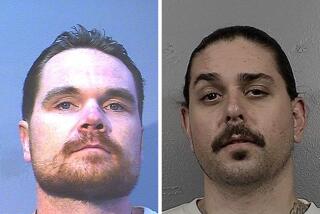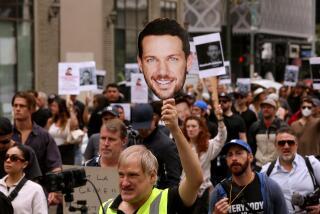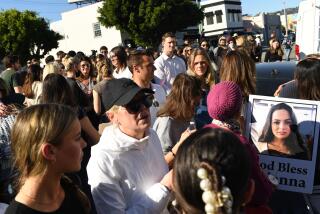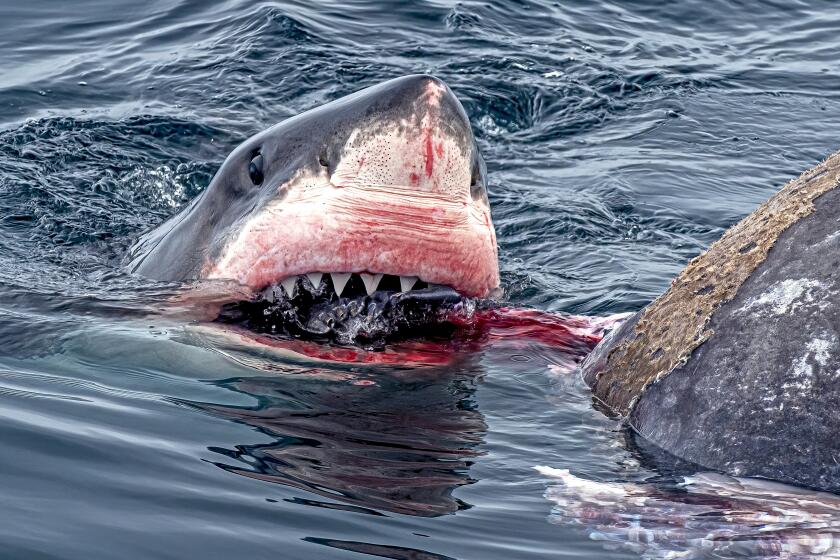Death row inmate fatally stabbed at San Quentin was responsible for sensational hate crime killing in Los Angeles
Death row inmate Jonathan Fajardo was fatally stabbed by a fellow inmate at San Quentin State Prison on Friday, 12 years after he was convicted in the sensational hate crime killing of a 14-year-old black girl that highlighted racial tensions in the Harbor Gateway area of Los Angeles.
The stabbing death of Fajardo, 30, was the first slaying of a death row inmate in California in more than 20 years, officials said.
He was stabbed in the chest and neck with an inmate-made weapon in a recreational yard of the cell house that holds the bulk of condemned inmates at the prison, Terry Thornton, a corrections department spokeswoman, told the Associated Press.
Luis Rodriguez, 34, who was waiting execution on two counts of murder, is considered the suspect, Thornton said. Investigators were trying to determine a motive and how he obtained or was able to make the weapon, she said.
Fajardo was convicted in 2010 of first-degree murder in the fatal shooting of Cheryl Green, whose slaying a jury found was a hate crime motivated by her race. Fajardo was also convicted of participating in the death of 21-year-old Christopher Ash, a fellow gang member who prosecutors said was killed because he was suspected of talking to police about Green’s killing.
Fajardo was a member of the 204th Street gang, a Latino gang that prosecutors said intimidated and attacked African Americans in Harbor Gateway. Most of the victims were not affiliated with a gang, police said.
According to court testimony, Fajardo walked up and opened fire on a group of young black people hanging out in a driveway on Dec. 15, 2006. Green was killed and three others injured in the unprovoked attack.
Ash’s body, stabbed more than 60 times and with his throat slit, was found on the side of a road in Carson two weeks after Green’s death.
Fajardo later admitted to police that he shot Green but called it an accident, saying he was aiming for a group of black men standing nearby. He told police that he and other gang members had earlier approached a sport utility vehicle driven by a black man, who pulled a gun as they came near, then drove off.
The violence highlighted the racial tensions that had plagued the working-class community for a decade.
Fajardo, who was 18 when he shot and killed Green, was “cavalier” enough to sing during police interviews and warned that the gun used in the attack was still out there and could be used to kill other blacks, police, rival gang members or snitches, prosecutors said at the time.
Green’s death sparked demonstrations and protests from residents and community activists.
Black residents told The Times that they were often harassed and beaten by members of the 204th Street gang, and could not even patronize the area’s only market, which the gang used as its hangout.
Within weeks of Green’s slaying, former FBI Director Robert Mueller joined then-Mayor Antonio Villaraigosa and then-Police Chief William J. Bratton at a news conference in front of the market, vowing to eradicate gang violence in the neighborhood.
UPDATES:
2:25 p.m. Oct. 6: Updated with details, background and quotes.
2:15 a.m. Oct. 6: Updated with details, background and quotes.
This article was first published at 4:45 p.m. Oct. 5.
More to Read
Sign up for Essential California
The most important California stories and recommendations in your inbox every morning.
You may occasionally receive promotional content from the Los Angeles Times.










